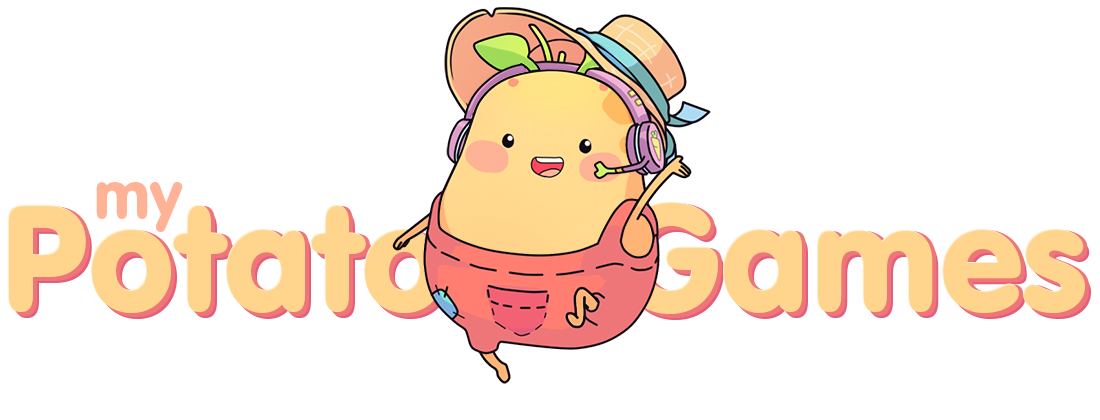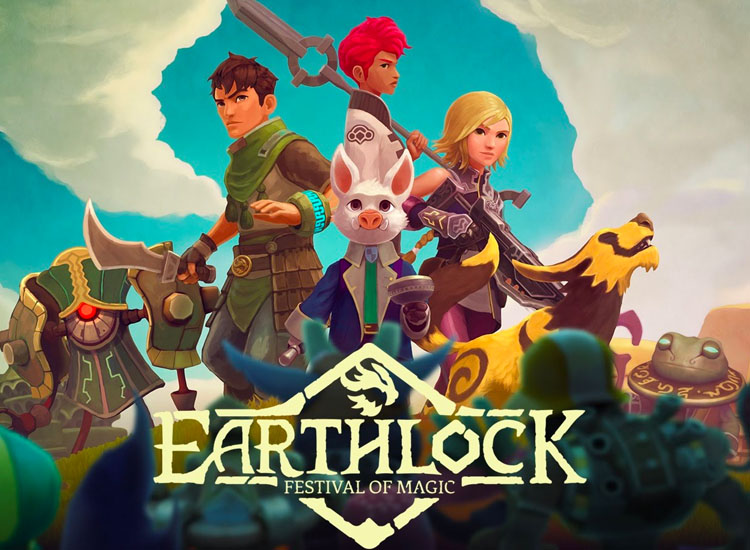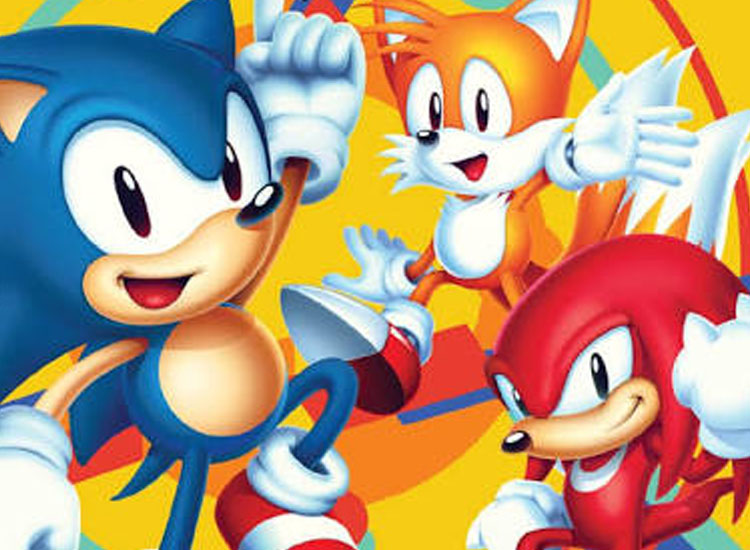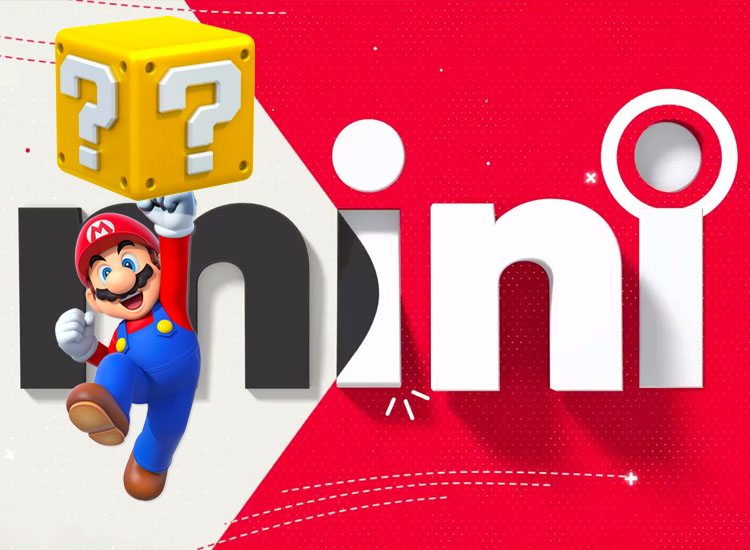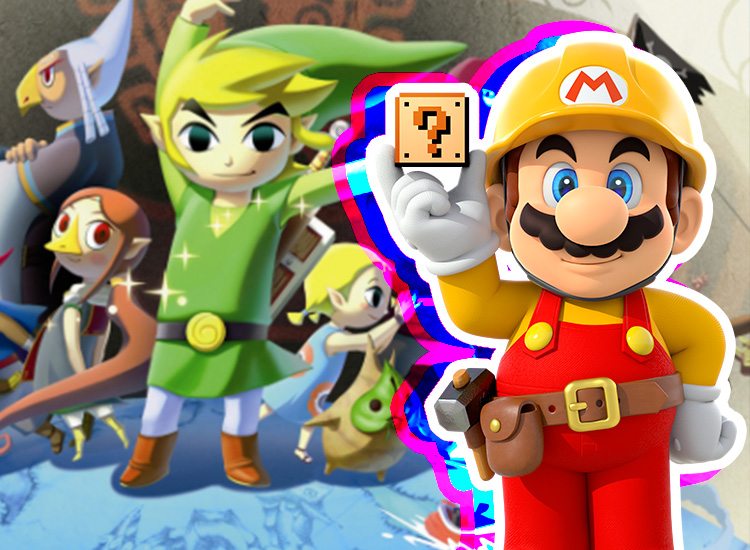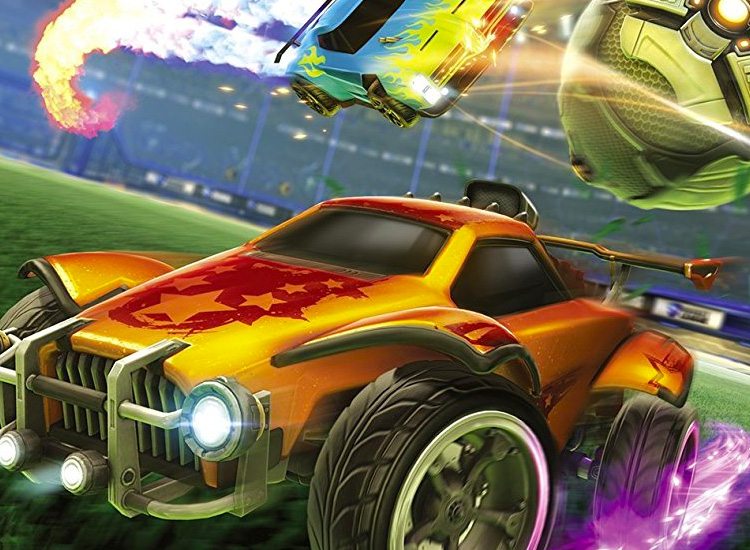Dylan
- Home
- Archive
Mar 18, 2018News
Earthlock is a game heavily inspired by the JRPGs of yesteryear, attempting to provide a gameplay experience reminiscent to that of a PS1-era Final Fantasy game. Previously releasing on Xbox One and PC in 2016, and Wii U and PS4 in 2017 as Earthlock: Festival of Magic, Earthlock shakes off its old name, offering new features that the original release was sorely lacking. The new and improved version of Earthlock which has released first for Nintendo Switch is said to provide a better fleshed-out story, crafting, side quests and much more. Earthlock makes a decent attempt of replicating the magic of 90’s JRPGs, but the game’s myriad of problems prevent it from becoming a title worthy of comparison to the revered game it’s inspired from.
The story is set in the world of Umbra, a world that has been affected by a catastrophic event that has ceased the world from rotating (thus the title Earthlock). The horrible event, known by the people as the Deadly Halt, has left the world in disarray. Areas that were once livable have become uninhabitable deserts or have been shrouded in snow, leaving humanity to seek refuge in the areas free from the harsh conditions. The story centres on Amon, a desert scavenger, who after uncovering a mysterious artefact quickly finds himself in a spot of bother. His Uncle is kidnapped by a mysterious group who have an interest in the artefact, and Amon must find a way to reunite with his Uncle. Amon isn’t alone on his journey, with plenty of allies joining him along the way, such as the adorable Hogbunny Gnart Tigermoth as well as Ive Lavender, a rebellious soldier from the Great Wave, desperate to prove she’s more than the just the general’s daughter.
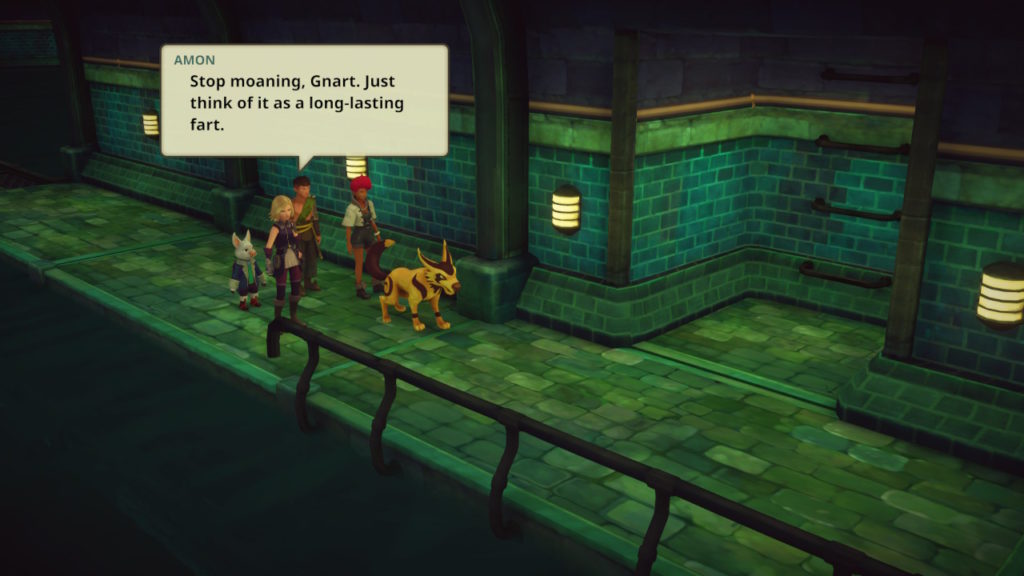
The characters that form your squad throughout the journey are quite enjoyable, despite being very cliched. Characters exchange the odd piece of witty dialogue, but they still felt rather bland most of the time, lacking the amount of character depth required for me to feel truly invested, which was truly a shame, as I really wanted to love the characters. The story does take a while to kick into gear, and even when the narrative began to get slightly more interesting, my lack of engagement with the world lead to myself feeling not a lot of interest. For those that do find enjoyment in the game’s world, there is a decent amount of lore to be found, I just never felt compelled enough to look for it. The characters are decent albeit generic, but the issues with the narrative and it’s pacing made it hard to remain invested.
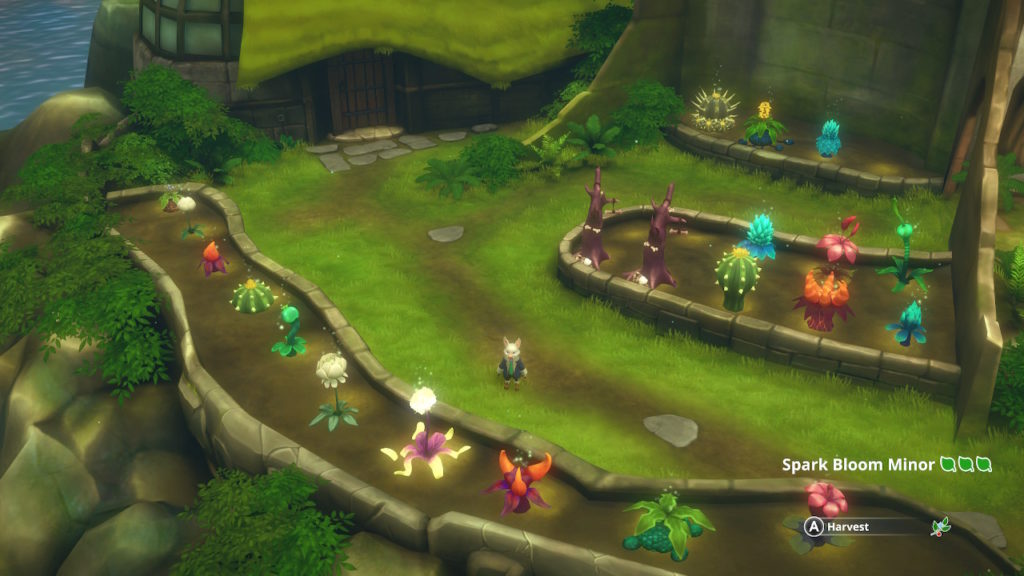
In terms of gameplay, Earthlock provides a turn-based system that occasionally shines, but more often than not is littered with minor annoyances. The combat despite its simplicity was often rather enjoyable, with more strategic combat than I thought there would be. Each character has two battle stances, which provide different ways to approach a battle. For example, Amon has a stance that focuses on melee attacks, and another stance that swaps the melee attacks for a spud gun that provides ranged combat options. The variety is appreciated, offering up different approaches to battles.
The ability to design your character’s talents using the talent point chart, and having characters bond over time to unlock special abilities were also aspects I enjoyed. In my playthrough for example, Amon and Gnart were inseparable, and when their bond meter reached max, Amon would be able to significantly damage the entire enemy squad, and then Gnart would heal him. Having six different characters to choose from to compile a team of four was also something I liked, as having the freedom of variety in your team composition could lead to a team that suits your style. The issues with the combat is how stale and repetitive it begins to feel, especially as the game progresses. This issue is further compounded by the overall slowness of the combat, as encounters seem to drag on far longer than they need to. Avoiding combat in a JRPG is an immediate bad sign, and during my time with Earthlock, I had periods where I’d attempt to avoid battles completely. I did find enjoyment in the game’s combat, but it does begin to get particularly grating.
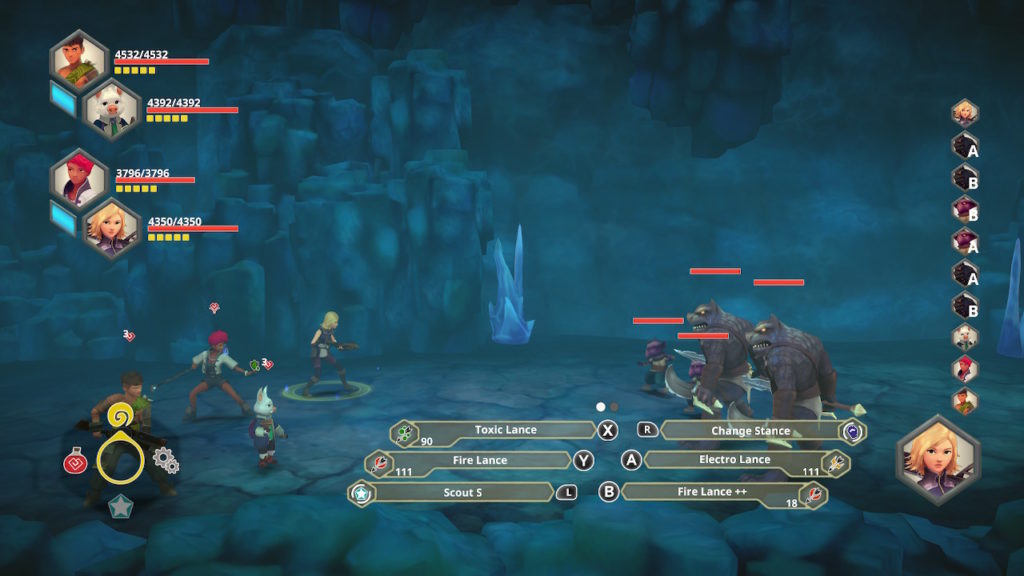
When you aren’t in combat, you’re free to travel the world of Umbra as you wish. There isn’t a great deal to do other than the stick to the story or fight random hordes of enemies, but there are a few other options, in the forms of side quests and crafting. The side quests throughout the game sadly feel like an afterthought, often requiring you to simply collect a certain amount of the required item, but the games crafting was surprisingly enjoyable. Unlike crafting games that make you wait significant periods of time, Earthlock allows you to plant seedlings and craft ammunition and potions from your collected materials almost immediately. I appreciated the simplicity of the crafting system, as it never felt overly menial.
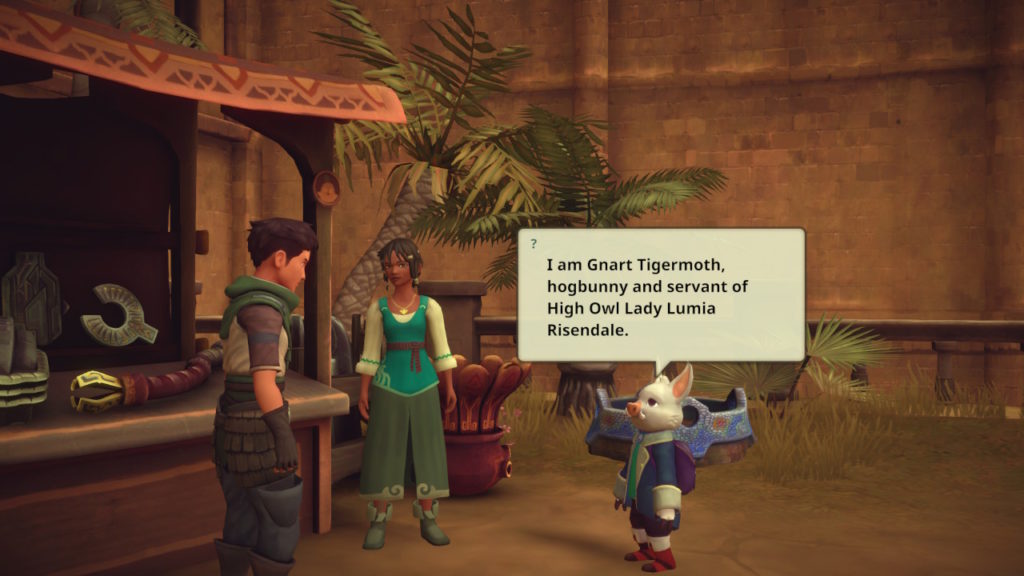
One of the most unforgiving issues I experienced during my time with Earthlock was the difficulty spikes that came out of nowhere numerous times. The game overall isn’t overly difficult, but the spikes that occurred multiple times completely ruined the flow of the game. Making your way through a dungeon with ease, and immediately becoming useless in the next area soured me so heavily that I at times turned the game off completely. JRPGs are known to require some amounts of grinding, but the amount of work required to become competitive again often didn’t feel worth it, with the last quarter of the game suffering from this issue significantly. It’s disappointing that the game is littered with these asinine difficulty spikes, as I’m sure it will be a reason that some will stop playing the game completely.
Overall, despite myself having a myriad of gripes with Earthlock, I did find it to be a rather good game. The combat had its moments, the story was serviceable, the characters are likeable, the music is great and the talent point system and crafting is fun to tinker with. Earthlock is a game I wanted to love, and despite the fact that it had its fair share of issues mainly was difficulty spikes and boring moments, I do believe it’s a game you should try if you have a strong love for 90s JRPGs. It may not match the quality of a Final Fantasy game, but it does offer up a decent JRPG experience.
Big thanks to Snow Castle Games for providing the Earthlock Switch Download Code for this review.
Mar 16, 2018News
After months of demand for a physical release of Sonic Mania, fans can now get their hands on Sonic’s greatest game of recent memory in the form of Sonic Mania Plus, when it releases later this summer. Announced by Sega at its Sonic the Hedgehog panel at South by Southwest (SXSW) Sonic Mania Plus is an updated version of the Sonic Mania title released in 2017, packing a few additional features.
The aforementioned additional content includes an Encore mode, which Sega said will offer players different ways to experience the game’s variety of levels, while competition mode, which in the original release only supported 2-players, has now been updated to support a 4-player mode. The amount of news on the new mode was particularly scarce, but we are sure to hear more as the title nears closer to release.
The most exciting piece of news to come from this announcement however, was that Mighty the Armadillo and Ray Flying Squirrel, arguably the Sonic series most obscure characters, have returned in the form of playable characters. Mighty and Ray made their debut in the 1993 arcade exclusive Sonic game SegaSonic the Hedgehog and despite making the odd cameo appearance, have been sorely missing from the Sonic series. Sonic fans have been clamoring for some love for Mighty the Armadillo and Ray the Flying Squirrel, so it’s nice to see that Sega are yet again listening to fans.
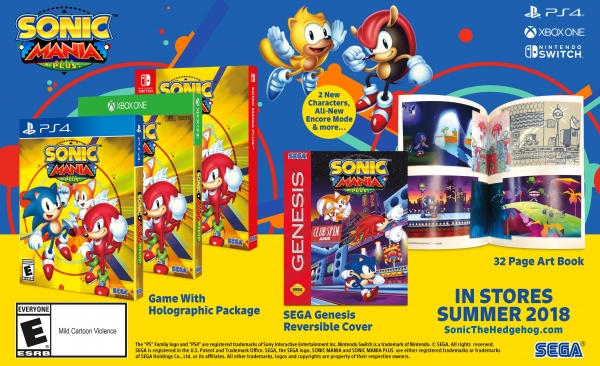
The physical release for game also looks stunning, packing the game in a gorgeous holographic cover, with a reversible sleeve that allows you to transform the game’s modern case to one that resembles a Sega Genesis box, complete with a more retro looking cover art. The physical release also comes with a 32 page artbook, comprising of awesome concept art.
We personally can’t wait to get our hands on Sonic Mania Plus when it releases later this year, and if you haven’t played the game yet, Sonic Mania Plus serves as the best way to do so. In the meantime you can get Sonic Mania for Switch, PS4 or XboxOne here.
For more gaming news, check out the recently announced Nintendo Nindies Showcase.
Feb 27, 2018News
On February 2nd, an anonymous 4chan user posted a list of announcements for a potential Nintendo Direct mini for 3DS, slated for March 1st. As to be expected with 4chan leaks, it was quickly disregarded due to the lack of evidence pointing to it being legitimate. However, earlier today an announcement was made that may point to this Nintendo Direct Mini actually being a possibility.
In the original leak, the anonymous user mentioned that the Atlus title, The Alliance Alive would have a demo released right after the Direct presentation. Funnily enough, Atlus announced in a press release earlier today that The Alliance Alive demo would indeed release on March 1st, aligning perfectly with the 4chan leak. This could be a coincidence, but it may indicate that a 3DS-centric Nintendo Direct Mini could be a few days away.
The leak contains news of unannounced 3DS titles, including remakes of the The Legend of Zelda: Link’s Awakening and Wario Land: Awazon’s Treasure, as well as localizations of released and unreleased Japanese games, such as Dragon Quest XI: Echoes of an Elusive Age and Monster Hunter Generations Ultimate (released in Japan as Monster Hunter XX).
At the end of the day, this could all just be frivolous rumors, but if it is indeed real, it would suggest that the 3DS still has plenty of life left.
The entire March 1st Nintendo Direct Mini for 3DS leak can be seen below.

For more recent Nintendo news, check out the Smash Bros Switch rumors. The big N also celebrated Pokemon day with some treats for it’s fans, check out the Pokemon goodies here.
Feb 21, 2018News
Whether or not you’re a fan of retro-inspired games, you’ve probably heard of Owlboy before. After releasing on PC in 2016, Owlboy garnered universal acclaim and was touted as one of the greatest indie releases in the last five years. Now, just over a year on from its PC launch, the game has soared onto the Nintendo Switch (Owl pun), with PS4 and Xbox One versions not too far away.
Owlboy centres its story on Otus, a mute Owl who struggles to garner the acceptance of people around him. He finds himself scowled and mocked heavily, especially by Asio, his brutally negative mentor. The story sees Otus’ town attacked by Pirates, setting into motion a journey that will see Otus and friends along travel to many distant lands, in the hopes of stopping the sky-pirates from obtaining the three legendary relics and ruining their homeland. The basis of Owlboy’s storyline is undoubtedly video game story cliche, but somehow it manages to sprinkle in far more emotional storytelling than would initially be expected.
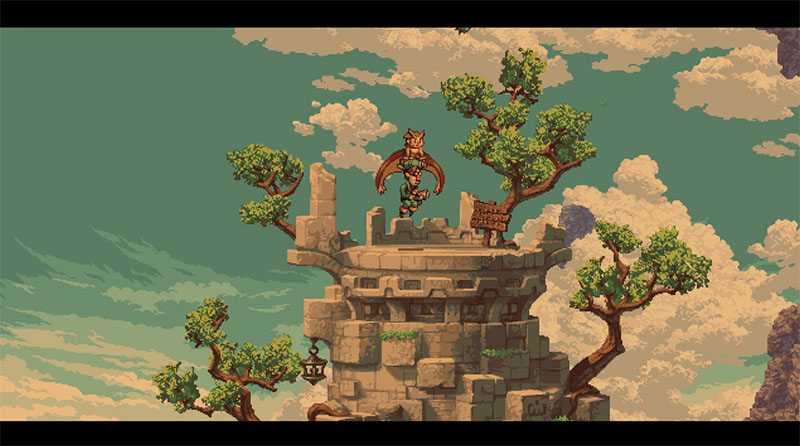
Owlboy is a game that addresses how people have self perceived flaws, and how, despite having weaknesses within themselves, the friends they have around them can make them feel like they belong. This is evident in Otus, with his struggles of being a mute, and how his best friend Geddy and his other buddies manage to give him strength and comfort in who he is. I won’t spoil any more of the story beats, but this game isn’t afraid to pile on you emotionally, as I found myself tearing up numerous times. With its fair share of epic and sad story moments, Owlboy’s narrative is a true highlight, and an aspect of the game I deem to be extremely important. The impact of the story was something that took me by complete surprise, leaving me heavily engaged, even after the credits had rolled. I do however wish the game didn’t end so abruptly, as the story ends leaving many questions unanswered. Even though it was obviously a decision to leave the ending of the story to interpretation, I wish I was given a more definitive ending.
Owlboy may have it’s slew of heartbreaking moments, but it also has plenty of joyous charm that emanates from the game’s humorous bunch of supporting characters. Otus is a sweet character that despite being unable to speak, provides plenty of character and humour with his variety of facial expressions, while his best pal Geddy is a goofy but caring mechanic, who wears his heart on his sleeve and isn’t afraid to express his opinion. Most characters throughout the game ooze personality and are a breath of fresh air in a genre where many characters can feel particularly stale and one-dimensional. Character dialogue had me chuckling aloud numerous times, which is a testament to how well the character dialogue has been written. Characters in Owlboy are yet another great strength that keeps Owlboy entertaining throughout.
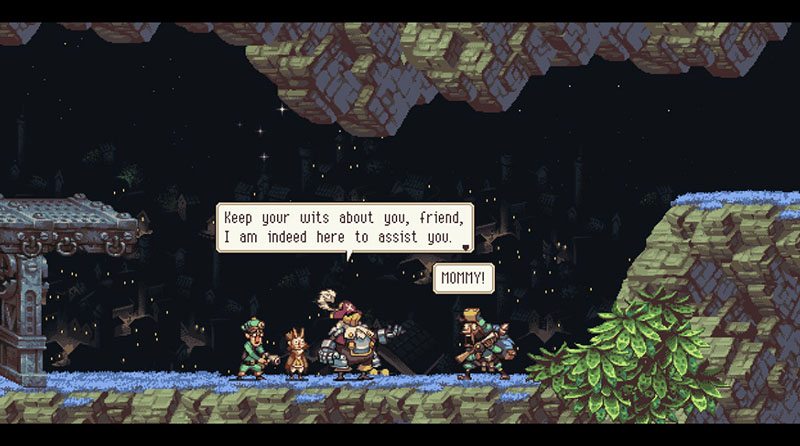
As Otus, you are pretty much given only a spin attack to keep enemies at bay. Otus, as indicated by his mentor Asio, isn’t particularly gifted, so his restricted moveset cleverly reinforces his character. In terms of flying, you’re pretty much free to do it uninhibited most of the time. There is no limit to flying, leading to the freedom of exploration, whilst alleviating the frustration of having to charge a flying meter. There are small segments throughout the game in which the ability to fly is taken away however, which leads to platforming segments that take away your comfort of control. Thankfully, these segments are well executed, leading to the type of quality platforming you’d expect from most other games in the genre.
Despite being unable to talk, Otus finds himself making friends, with these friends acting as individual abilities throughout the game. For example, Otus’ best friend Geddy acts as Otus’ method of attack, with Otus’ flying Geddy around while he shoots down enemies. The gameplay of all the friends throughout the journey is comparable to that of a twin-stick shooter. The shooting of enemies while flying around doesn’t at all feel complex, yet it still feels immensely rewarding to take out a multitude of enemies by spamming the trigger. As the game progresses and Otus makes new friendships, the new friends can be switched through on the fly (Owl pun) at almost any time. As to be expected from a game in the metroidvania genre, some areas can only be unlocked using certain abilities, with Alphonse’s shotgun allowing access to areas that Geddy’s blaster could not. Swapping through characters to ensure you have the right weapons at your disposal to progress through dungeons and defeat bosses can take a while to get comfortable with, but once you get ahold of the concept, it offers an interesting and enjoyable take on metroidvania progression.
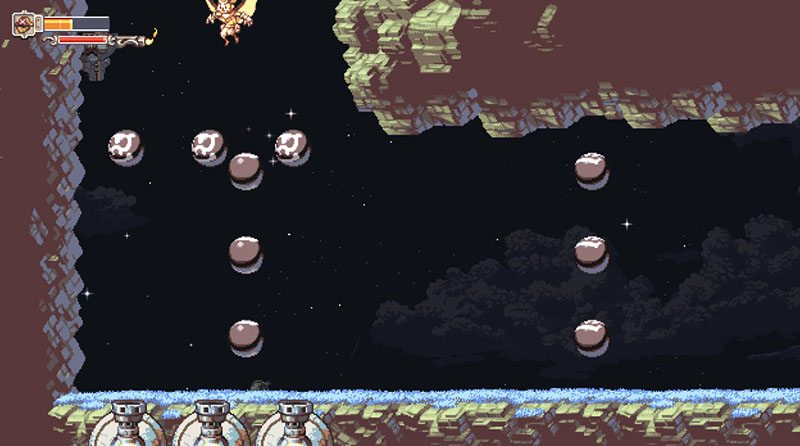
Graphically speaking, Owlboy’s pixel art aesthetic is in a league of its own, being arguably the most detailed and beautiful pixel art i’ve ever seen. The crisp animation looks jaw-dropping in both the Switch versions docked and handheld modes. The game’s highly publicised 9-year development cycle can truly be seen with the sheer quality of the games environmental and character designs. Characters exhibit a breathtaking amount of expression, both in body language and facial expressions. Otus’ face would turn from anger to shock, and in the games darker and more emotional moments, Otus’ body would slump, emphasising the gravity of what had occurred. The environments throughout the world are also extremely lively thanks to quality animation. Shrubs sway in accordance to the breeze, while the grass on the floor despite being so small in size can be seen moving with the wind also. The meticulous detail of Owlboys animation is something that arguably didn’t need to have been done, but the games world and characters are far more polished and expressive thanks to it.
The game’s soundtrack is also breathtaking, with numerous tracks providing great moments. Owlboy’s soundtrack has plenty of melodic tear-jerkers, as well as booming, epic beats, that always seem to perfectly fit in with the part of the game they are played in. My personal favorite would be the theme for the town of Tropos, with its epic piano and violin pieces being the perfect music to emanate Owlboy’s sense of adventure.

Despite being a brilliant 10 hour experience, Owlboy does have a small assortment of issues that did hinder my experience somewhat. When playing the game on the Nintendo Switch, I encountered about 5 crashes in my full playthrough. Some crashes were immediately after dying throughout the game, while other crashes seemingly occurred during the transitions from one area to another. Thankfully, the game autosaves frequently, meaning that not much, if any, progress is lost, but it’s still an annoyance nonetheless. I also encountered some heavy frame dropping in one of the game’s many boss battles, with the Lava Worm boss battle dropping performance to below 10fps when attacking. This was the only performance hiccup I recognised in my playthrough, but it was yet another frustrating issue, as I found it difficult trying to avoid attacks when the game would chug as badly as it did. These issues are simple fixes and will probably be removed in the coming weeks via patches, but it’s important to mention they do exist. It would’ve also been nice for the game to include a map feature, as it was hard to tell where I had and hadn’t backtracked.
Owlboy is overall a perfectly crafted Metroidvania experience that I implore everyone to play. The gameplay is tight and satisfying, the characters are sweet and charming, the story is remarkably deep and emotional, and the soundtrack ranges from beautiful and whimsical to booming and intense. Owlboy exudes polish and love, with D-Pad Studio managing to design a game that despite borrowing elements from games of the past, still feels remarkably fresh and modern. Owlboy is the complete package, and it offers up an experience that shouldn’t be missed.
Owlboy was reviewed on Nintendo Switch
Feb 14, 2018Animal Crossing
Back in 2016, Nintendo announced that Animal Crossing would see a mobile game release, as part of Nintendo’s first line of smartphone games, with the title planned to have connectivity with a mainline Animal Crossing game. Despite the Animal Crossing title (now known as Animal Crossing: Pocket Camp) being slated for release by the end of 2016, the game was delayed, with the big N prioritising Super Mario Run as their end of 2016 mobile release.
The end of 2016 may have not seen the release of Animal Crossing on mobile devices, but there was a new major update released on the series 3DS title, Animal Crossing New Leaf. The ‘Welcome Amiibo’ update to New Leaf brought with it a variety of new features, including a campsite area, much like the one seen in Animal Crossing Pocket Camp. With the Welcome Amiibo update coming to New Leaf in the same period of time that Animal Crossing Pocket Camp was meant to release, it’s blatantly obvious that the two titles were supposed to have the connectivity that Nintendo had teased.
As we know, Pocket Camp never hit its intended end of 2016 release window, with the game being delayed a full year before releasing in late 2017. Looking back now, it seems the delay of Pocket Camp from end of year 2016 to end of year 2017 seemingly killed off the proposed interaction between the mainline 3DS title and the mobile release. This theory has been further backed in the last few days, with a recent data mine shedding light on how Nintendo had initially planned to connect the two Animal Crossing titles together.
The datamine revealed that an item resembling a smartphone in New Leaf would act as a bridge between the title and Pocket Camp. Whether the smartphone item would’ve been attained by making initial connection between the games or not is sadly unknown due to the item being scrapped entirely, due to Pocket Camps delay. The datamine also indicated that there was a connection between both games in regard to the CAT Machine and MEOW coupons. As players of the Welcome Amiibo update know, the MEOW coupons in New Leaf were used as rewards for completing daily initiatives, so it would make sense to assume that MEOW coupons could be attained in Pocket Camp for use in New Leaf.
Sadly, the bridge of connectivity between New Leaf and Pocket Camp was severed, as the removal of the smartphone item from the Welcome Amiibo update destroyed the form of connectivity between games. We may still get connectivity between Pocket Camp and the future Animal Crossing Switch release, but it’s a huge shame knowing that connectivity was planned, and eventually scrapped entirely.
Youtuber BRMenny has gone into further detail of Animal Crossing Pocket Camp’s datamine and it’s planned connection to New Leaf in the video below.
Feb 12, 2018Feature
There is no doubting that the Wii U was serious misstep. The system sold a mere 13.56 million during its 5 year life cycle, a number which has already been eclipsed by the Nintendo Switch, which has sold a breathtaking 14.86 million units in its first 9 months on store shelves. But despite the fact that the Wii U sold such a meagre amount, the system was undoubtedly blessed with an abundance of brilliant titles, that sadly, not enough people have had the opportunity to play. We have seen Nintendo be very Wii U port heavy for the first 9 months of the Switch’s life, with The Legend of Zelda: Breath of the Wild, Mario Kart 8 Deluxe and Pokken Tournament DX already released on the Switch. But that isn’t all, with other Wii U ports including Bayonetta, Bayonetta 2, Donkey Kong Country: Tropical Freeze and Hyrule Warriors: Definitive Edition all slated for release in 2018.
Ports are very divisive amongst gamers. Some people are happy to have access to games they missed or would like to play again, while others feel that ports stunt the progression of new titles. I’m a firm believer that if the Switch can push out the odd Wii U port in the quieter months between Switch only first-party releases, than it will be of great benefit for everyone. Too many Wii U games were lost in the fray of the dying console, and here are five Wii U ports I hope to see taken from the ashes of the Wii U and ported over to the Switch.
Super Mario 3D World
Super Mario 3D World is without a doubt one of Mario’s most underappreciated mainline series entries. The game is seen as a bit of black sheep, with many disappointed that it wasn’t a Mario game in a similar vein to Super Mario 64 or Super Mario Galaxy.
The game would be right at home on Nintendo Switch, with the multiplayer-focused Mario title sure to benefit from the easy pick up and play multiplayer that the joy-cons provide. Super Mario 3D World could be a game ported between Mario Odyssey and the release of the next mainline Mario title, to ensure that there is another Mario title for fans to get their hands on.
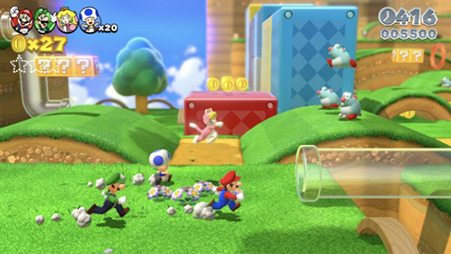
Captain Toad: Treasure Tracker
Those who owned a Wii U would know of Captain Toad: Treasure Tracker, and how immensely enjoyable the game was. The game was highly praised and revered upon its release, but like most Wii U titles, it was quickly forgotten.The spin-off Mario title built upon the foundations of the Adventures of Captain Toad minigame from Super Mario 3D World, and managed to create an expertly crafted full length game. Captain Toad: Treasure Tracker is deserving of far more love and attention, and I honestly believe it’s a game that we will eventually see on the Nintendo Switch.
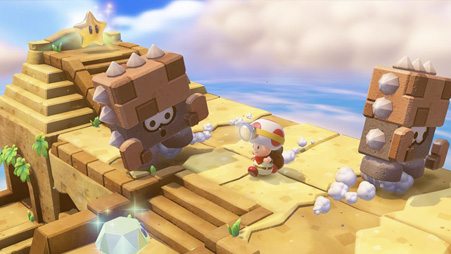
The Legend of Zelda: The Wind Waker & The Legend of Zelda: Twilight Princess
This answer is a little bit of a sneaky one, considering it’s two games, but at the end of the day, both of these games deserve a place in the Nintendo Switch library. Being ports themselves of much loved Zelda titles, they were both released on the Wii U, with Wind Waker garnering 2.25 million copies sold, while Twilight Princess saw sales of approximately 1.23 million. Considering The Legend of Zelda: Breath of the Wild has seen sales of 6.7 million units on Switch alone in just 9 months, re-releasing these undersold Zelda titles makes a lot of sense. These two Zelda games are too important to miss and are both solid HD remasters that don’t deserve to be stranded on the Wii U. The Wind Waker and Twilight Princess are both perfect titles to port to the Switch, and should be released over time to quell the appetite of those hungry for a new Zelda title over the next few years.
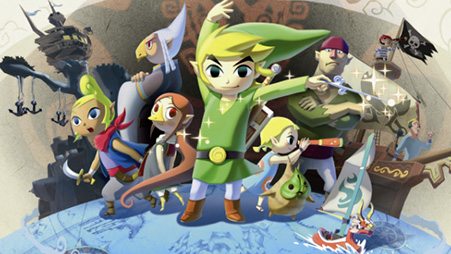
Super Mario Maker
Super Mario Maker is one the greatest games to ever grace the Wii U system. The games tools allowed for creation of Mario levels from titles such as Super Mario Bros, Super Mario Bros 3, Super Mario World and New Super Mario Bros U, with levels being both joyous to create and play. The games online community was and still is incredibly vibrant, with new creations available to play daily, and this hardcore community has the potential to become even larger on Nintendo Switch. I’m certain that Super Mario Maker will appear on the Nintendo Switch soon enough, whether it be a port of the Wii U game, or a new game entirely. This is one of the Wii U ports we would love to see most!
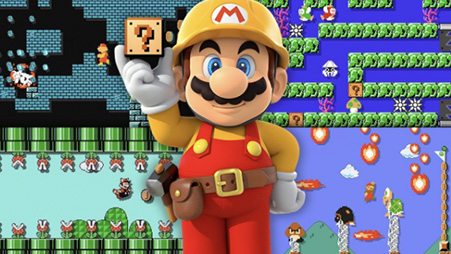
Super Smash Bros
Much like Super Mario Maker, Super Smash Bros for Wii U’s port to Switch hinges on one thing, is it better to release a port or a new title? Super Smash Bros for Wii U being packed in with all of its stage and character DLC in a format similar to Mario Kart 8 Deluxe would make sense, but it may better option for Nintendo to just focus wholeheartedly on the next game in the series. As much as I would like to get my hands on a Super Smash Bros port as soon as possible, I do believe that this port may possibly not happen at all. Regardless, we either get a port of Super Smash Bros for Wii U, or a brand new Super Smash Bros game, it’s safe to say that’s a win-win scenario.
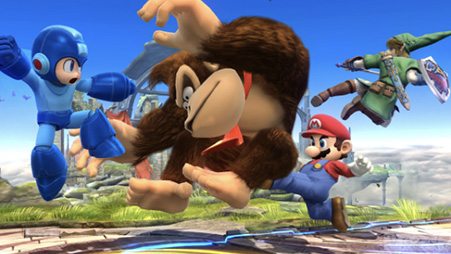
The Wii U had a seriously amazing assortment of games, and there are more than these five titles that could have easily been added to the list. At the end of the day, ports are a great way for Nintendo to maintain a stream of quality releases, and if Nintendo can manage to release new titles, while filling the gaps with the odd Wii U ports, it’s hard to argue why it isn’t a good idea. Good games deserve to be played, and the Wii U had plenty that we may still see revived on the Nintendo Switch.
While these Wii U Ports would be wonderful, there are still many more great games to come. For more amazing Nintendo Switch games, check out our list of new game releases right here.
Feb 11, 2018News
Rocket League’s premise is decidedly simple. Drive your high speed, rocket propelled car, and try and get the ball in the goal. Despite being such an uncomplicated game, Rocket League manages to provide brilliant gameplay that is easy to learn, but extremely difficult to master, as well as an amazing smorgasbord of different multiplayer modes. Driving the ball in to the goal is a simple enough task for anyone to achieve, however the game sports high-octane flipping and boosting that ensures that the game’s depth of strategy is far deeper than it’s initially perceived. Rocket League may have been available on other systems over 2 years ago, but with the Nintendo Switch version only releasing a few months ago, it’s time to have a look at how Rocket League stacks up on the latest Nintendo console.
Rocket League is certainly king when it comes to gameplay. The main gameplay mode, titled Soc-car (brilliant pun, I know) pits vehicle against vehicle in a game of a high speed, high action soccer. As mentioned prior, the premise of Soc-car is remarkably simple, score more goals than your opponent to win, sounds easy enough correct? The simplicity of Rocket League is arguably what makes it such a fun and addictive game, with the gameplay objectives being easy to pick up and play. In terms of gameplay, that’s basically it, but the gameplay is so expertly crafted that it never feels boring or monotonous.
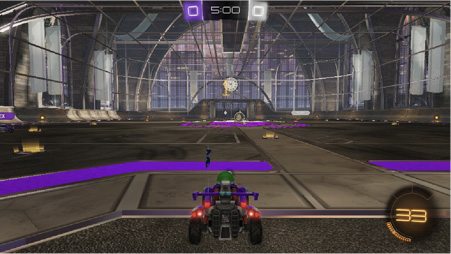
Soc-car is Rocket League’s main mode, and easily its best one
Soc-car isn’t the only gameplay mode on offer though, with various other modes available. Hoops mode converts Rocket League’s vehicular Soccer into a game of vehicular Basketball. Despite being not as fun as the game’s Soc-car mode, Hoops offers a mode that focuses more on keeping the ball in the air, with off-ground possession of the ball being the key to success. Hoops is undoubtedly a far weaker mode in Rocket League than Socc-car, but there is still plenty to be enjoyed in the Basketball themed mode. Snow Day is a mode that yet again changes Rocket League to different sport entirely, with Snow Day being a hockey mode. Snow Day succeeds in being a mode in which players can maintain control of the puck, as the predictability of a puck in comparison to a ball leads to far more controlled games. Being able to boost along the wall while maintaining easy control of the puck is a great feeling, and it was a great side mode that I spent lots of time in.
Rumble is a mode that resembles Mario Kart, with items being used on courses to add to an even more intense version of Soc-car. Every 10 seconds, players are given new items to use, such as a boxing glove that will propel the ball forward, or a disruptor which will cause an opponent’s car to accelerate uncontrollably. Rumble mode is hilarious fun that is best played with friends. The final mode, Dropshot, is a mode that involves hitting the ball into the floor of your opponents, in an attempt to break the floor and score a goal. Dropshot mode is all about maintaining control of the ball in the opposition’s side of the field, as once the floor has been destroyed enough, the goal is available. Dropshot is yet another great mode, being the most unique mode when compared to the other optional modes on offer. Offline play is a great time and the AI tends to be serviceable enough, although sometimes the AI can be a little dumb. If the ball is heading straight for the oppositions goal, they often just drive it right in to the goal. Offline play still provides plenty of hours of enjoyment, and despite the AI overall doing a good job its stupidity can be infuriating at times. The multiplayer is thankfully eons better, but we will get to that a bit later in the review. Overall, Rocket Leagues alternative modes are all great fun, and compliment the game’s already brilliant Soc-car mode.
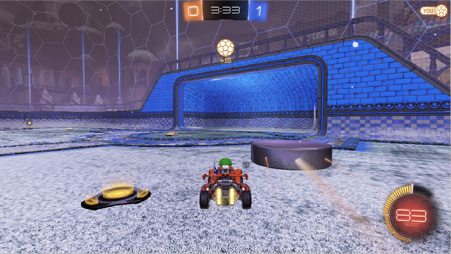
Snow Day is an example of one of Rocket League’s great alternative modes
Rocket League’s slew of modes can all be played with differing amounts of players in each side. 1v1 is a mode that is great if you have a score to settle with a friend, but otherwise it’s probably the least ideal mode to choose, as games can feel empty when you only have the singular opponent. 2v2 is also on offer, but the game truly hits its sweet spot in terms of balance when 3v3 matches take place. 3v3 matches nails the equilibrium of intensity and enjoyment, ensuring games flow at a good rate and aren’t too over crowded. 4v4 modes are ideal if you want a far more frantic experience, but I found myself constantly gravitating to the 3v3 games. Rocket League at least provides the option to players, granting them the freedom to find a mode and player count that suits them best.
Car customisation in Rocket League is full of options of things to tweak, from the obvious paint jobs and tyres, to the finer details such as how the engine sounds. Being the Nintendo version of Rocket League, there are a few Nintendo exclusive items, such as the Mario and Luigi hats, as well as system exclusive cars, such as the Mario NSR, Luigi NSR, and Samus’ Gunship. Customisable parts can be obtained simply by playing the game, with microtransactions involving loot boxes being your other way to get a hold of the game’s more unique and awesome loot. I didn’t feel the microtransactions were at all egregious, and despite their existence, they can easily be avoided. Rocket’s League’s customisation options are something I found heavily enjoyable, as it allows for users to design a car with their own distinct sense of personality and flair.
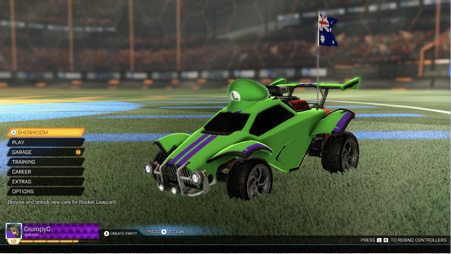
No other game lets me customize my car to highlight my love of Australia and Luigi simultaneously
Rocket League flaunts an abundance of different looking courses, some of which are exclusive to particular game modes. Courses all play relatively similar, however some have varied terrain which makes for a different gameplay experience. Rocket League’s courses all feature rather different aesthetics. One course sees you playing in an underwater arena, with a Shark and Stingray gliding in the water above, while another course, Neo Tokyo, as its name suggests, presents a futuristic, neon-clad Tokyo city arena. Some courses even sport alternative time of day and weather modes, further adding to the variety of course selection. Obviously, most of the courses do play the same, but it’s nice to have varied environments, as it saves the game from coming across as overly stale.
Rocket League’s multiplayer is the main reason to jump onboard and stick around, with all the modes available in the multiplayer playlists. Thanks to the cross-play collaboration with Xbox One and PC, Nintendo Switch users will never feel alone when it comes to finding other people online. If you don’t want to play against those on rivalling hardware for whatever reason, the option to turn off cross-play can be found in the options menu. I highly recommend keeping cross-play on however, as when searching exclusively for other Nintendo Switch users, I struggled to connect to games, and when I did, the other players were clearly from other parts of the world, and my online connection suffered. For the most part, I encountered little to no lag when playing online, something I’ve never been able to say I’ve experienced on a Nintendo system before.
Every once and while when playing online I’d encounter another Switch user, but most online games I found myself with Xbox or PC gamers, which I found hard having an issue with. After all, having cross-play means that the game will always be populated, and that’s never a bad thing.
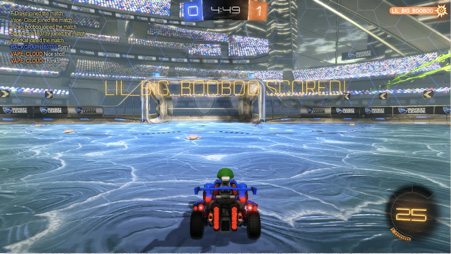
Seamless online multiplayer on the Switch is a beautiful sight
In terms of Nintendo Switch performance, Rocket League’s port is a little hit and miss. The game attempts to provide 720p 60fps in docked mode and 576p 60fps in handheld mode, with the dynamic resolution scaler making sure to drop the resolution in certain situations, to maintain the 60fps performance. As someone who prefers a game to run at a smooth 60fps, I’m perfectly fine with a game lessening it’s graphical fidelity, however, with Rocket League on Switch in docked mode, the game drops at times from a just passable 720p, to a far less forgivable 576p, which can look ugly when blown up on big TV displays. In the end, Rocket League manages to stay around the 60fps mark, but the game starts to progressively uglier as a result.
The game when in handheld mode, manages to hide most of its imperfections thanks to the far smaller display, but the game still struggles and looks quite jaggy and blurry. The games performance drops to around 40/50 frames when split screen is played, but it still manages to provide an enjoyable gaming experience. Performance wise, Rocket League on Switch is by no means brilliant, but I would say it’s still quite easily worth the purchase. Graphics may not be great, but the semi-reliable framerate paired with the ability to play portably offers a unique Rocket League experience that no other system can provide.
Performance will also improve later this spring, with Psyonix announcing updates will be brought to the system. Performance mode will offer 900p 60fps in docked mode and 720p 60fps in handheld mode. Quality mode will see docked mode maintain 1080p 30fps, with handheld mode aiming for 900p 30 fps.
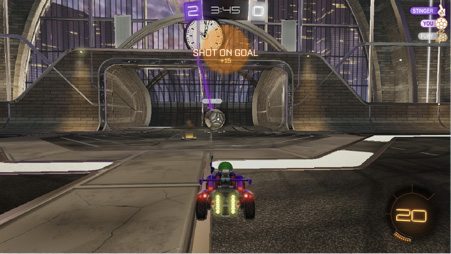
It may not be picturesque, but it sure is fun!
Rocket League on Nintendo Switch may be the ugly duckling of the Rocket League versions, but it still manages to provide a quality Rocket League experience that maintains the exact same available content as the rivalling console and PC versions. Panic Button, the studio tasked with porting Rocket League to Switch should be commended for their ability to bring an enjoyable, content-packed game like Rocket League to the Nintendo Switch. Rocket League on Nintendo Switch is a joy to play, with the games myriad of modes playable both offline and online, sure to keep fans of the game entertained for a long while yet.
Feb 3, 2018Animal Crossing
As always, Nintendo fans are clamouring for news on Animal Crossing Switch. The game hasn’t even been announced yet, but in the mind of Animal Crossing fans, it’s basically guaranteed. Regardless, just because we haven’t heard a word of the games development, doesn’t mean we can’t talk about what new features and ideas we’d like to see when it finally does release. So, without further ado , here are the top five things I hope to see in Animal Crossing for Nintendo Switch. If you can’t wait for the next Animal Crossing Switch game, then check out our list of most adorable must-have Animal Crossing Merch to tie you over.
A Job System
Prior Animal Crossing titles have dabbled with the idea of giving players jobs. Whether it was the work you had to do for Tom Nook in the original Animal Crossing, Wild World and City Folk or the job you could land serving coffee at the Roost in New Leaf, the series has had small attempts at creating jobs for Villagers to be able to work. In Animal Crossing Switch, I’m hoping for a properly implemented job system. Imagine after being a regular customer at one of the games assortment of stores you were offered a part time job, with the promise of Bells, exclusive items and even a staff discount. The more work you do, the greater the pay and staff discount, with some stores being more generous with their pay than others (I’m sure Tom Nook would be the guy to pay you almost nothing and give you a 1% staff discount).
For example, maybe the Able sisters hire you to fulfil Villager requests for outfits, and you spend some of your time each day designing said outfits. Another job possibility could be to work alongside Harriet at Shampoodles, possibly as a stylist. Customers come in and ask about a particular style and colour, you decide and Harriet does the work. These are only a few examples, but I’m confident that a job system like this could be implemented successfully.
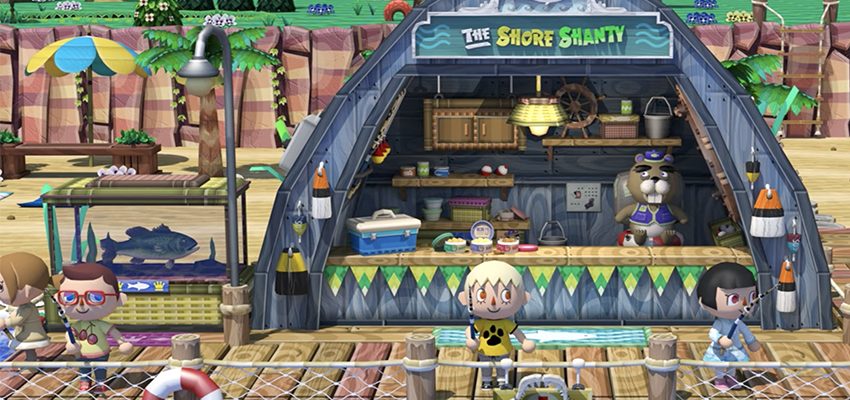
Animal Crossing Make Believe Series
Greater Online Player Interaction
Something I’ve always dreamed about having in Animal Crossing was a bit more freedom regarding the games online player interaction. With the announcement on Nintendo’s paid online service releasing in September, it’s only fair to assume that Animal Crossing’s online offering will be greater than prior games, to justify people spending money to play online.
One thing I would love to see in Animal Crossing online is some sort of social hub, in a similar vein to Inkopolis in Splatoon. Imagine a City (like the one in City Folk) where Villagers all around the world can gather and communicate, trade items etc. The hub City could also contain exclusive shops, which would encourage players to visit and spend time communicating with other players. It’s an idea I doubt will be implemented, but I can hope and dream.
We’d also like to see the possibility of being able to have friends online move in to your town, whether that be in your own home as a roommate or in their own home entirely. Imagine having a town to share with friends, where you can work together each day catching fish and bugs or working jobs (like the ones in my job system idea) to pay off your house to build a bigger one. Having the option to share your town with a friend would be a mind-blowing feature that’d raise my hype for the game to even greater heights.
World Customisation Control
When Animal Crossing finally lands on Nintendo Switch, I hope to see the option of being able to set the village up manually. Having an option to personally set the location of shops, houses etc at the beginning of the game would be a welcome feature that I believe would allow for players to create towns with their own personality. Allowing for such customisation could lead far more variety when it comes to town layout. For example, one player may want to place all shops and houses together in close proximity, creating the feel of a tight-knit community while leaving the rest of the map to feature as a dense and isolated forest to grow flowers, catch bugs etc, while another player may prefer to spread all of the towns locales evenly across the map, so that no area of the town feels too barren.
The ability to have a say where things go in your town shouldn’t just be set to the beginning of the game either. Every fan of Animal Crossing is acutely aware of the immense frustration felt when a new Villagers house just happens to be plotted exactly on top of your meticulously prepared flower garden or orchard of fruit trees. To make sure that this problem doesn’t occur again, it would be great to be able to place the locations of new Villagers houses. It’s a feature that wouldn’t require too much, and it would save us all the heartache of losing parts of our towns we work so hard to build. It’d also be great to be able to have a proper paving system, instead of having to use patterns to mimic actual pavement.
At the end of the day, the freedom to customize the town to your liking should be a feature when Animal Crossing Switch releases.
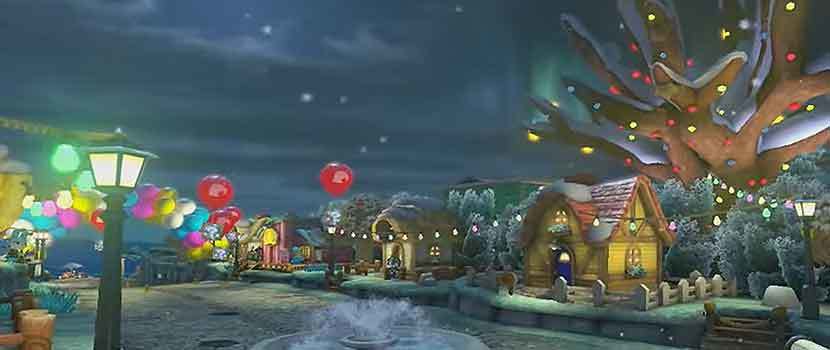
More Depth in Villager Interaction
Animal Crossing has a bunch of adorable critters to befriend, there’s no doubting that, I just wish there was a bit more depth when it came to talking with them. Building stronger relationships with characters is something I feel that the Animal Crossing franchise could significantly benefit from. If Villagers could have their own distinct likes, dislikes with food, activities etc, it would be a great system that could be used to build on character relationships and it would also greatly encourage the player to try and befriend the townsfolk.
For example, if there was a cooking system implemented in the game, you could create meals that you could give to Villagers to boost your friendship. Whether they like the food or not could be established by what they talk about when chatting to them. Imagine being able to win over a notoriously grumpy character such as Wolfgang by making him an apple pie because when you talked to him one day he mentioned how much he missed his mother’s apple pie, or something along those lines. Paying attention to what the characters say and presenting them with things that they like is a simple way to make a friendship system, but I hope that the next Animal Crossing game features a similar system that rewards the player for listening to what the Villagers say.
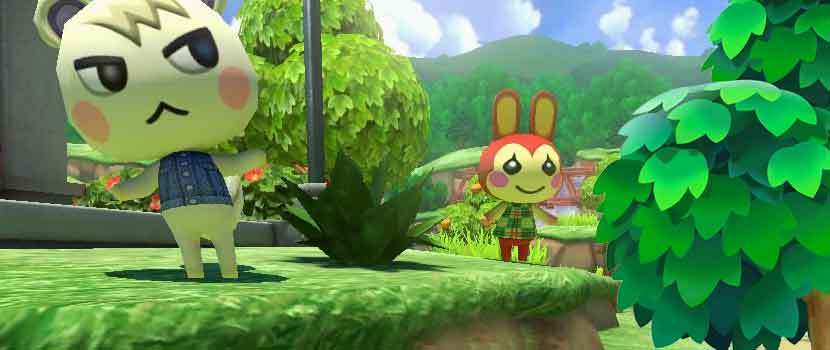
Utilise the Switch’s hardware
This seems like a bit of a no-brainer, but do let me expound. If and when Animal Crossing releases on the Nintendo Switch, it’ll be the first AC game on a home console since Animal Crossing: City Folk on the Wii. Therefore, it’s safe to assume we are going to see a large technical improvement over the last home console release. There is no doubt that game is going to look gorgeous on the system, with beautiful polished graphics sure to blow fans away. However, greater graphics aren’t the only thing We’d like the Nintendo Switch to bring to Animal Crossing. Seamless transitions in and out buildings would be something We’d like to see, as ridding of the short loading times between transitions would add to the feel of the town constantly being alive. Removing the short periods that break immersion would quite obviously make the game feel a bit more immersive.
We’d also like to see the game environment be bigger and have varied terrain, whether that be varied ground heights like the cliffs and slopes seen in other Animal Crossing games, or new types of terrain entirely. Size of the world increasing should only be executed if there are more things to do in the Village, otherwise in the increase in size could be detrimental to the games feel (quality over quantity).
HD rumble is a feature that Nintendo have touted numerous times since the Switch was announced, and it would be cool to see if it could be effectively used in Animal Crossing. I could see the HD rumble being used in numerous ways. For example, the controller when shovelling dirt might register a soft and ever so slight vibration, whereas hitting a rock with a shovel would lead to a sharp thud of a vibration. Small attentions to detail with the HD rumble would be great to see, as it’s a feature underutilized in the Switch’s life so far. It could even play a role in fishing, with the tugs of the fish sending a vibration to the controller to mimic the bite. The options are endless.
The Switch’s hardware is set to create a truly amazing and immersive Animal Crossing experience, but we just need to wait and see when Nintendo decided to share the new Animal Crossing Switch with us. So for now, we must wait. In the meantime however we can fill our hearts with these adorable Animal Crossing goodies. Or this adorable Animal Crossing Mug, Tea Pot, Cushions and more!
Check out what Animal Crossing Switch could really look like here.
Dylan Blereau
A hardcore gamer on all platforms. Find me on twitter @GrumpyGoron. If you want to see more of my work feel free to visit my website!

